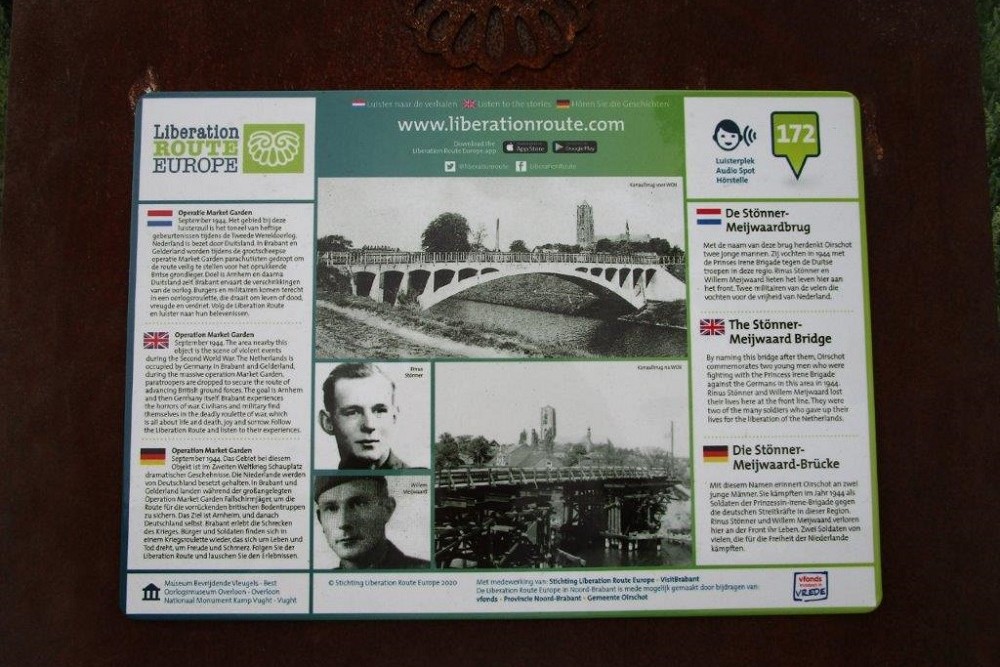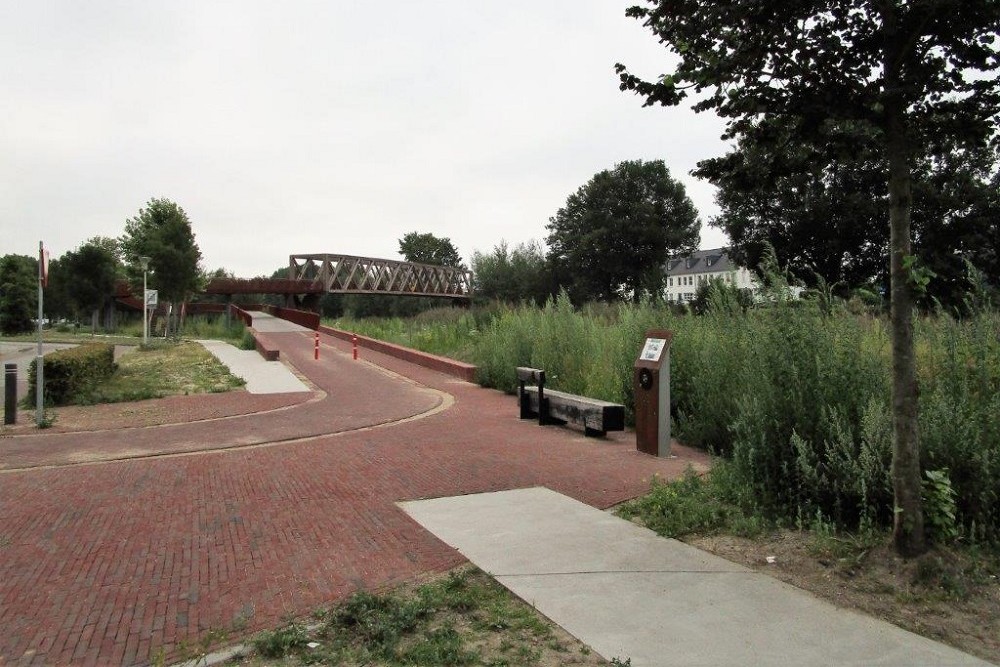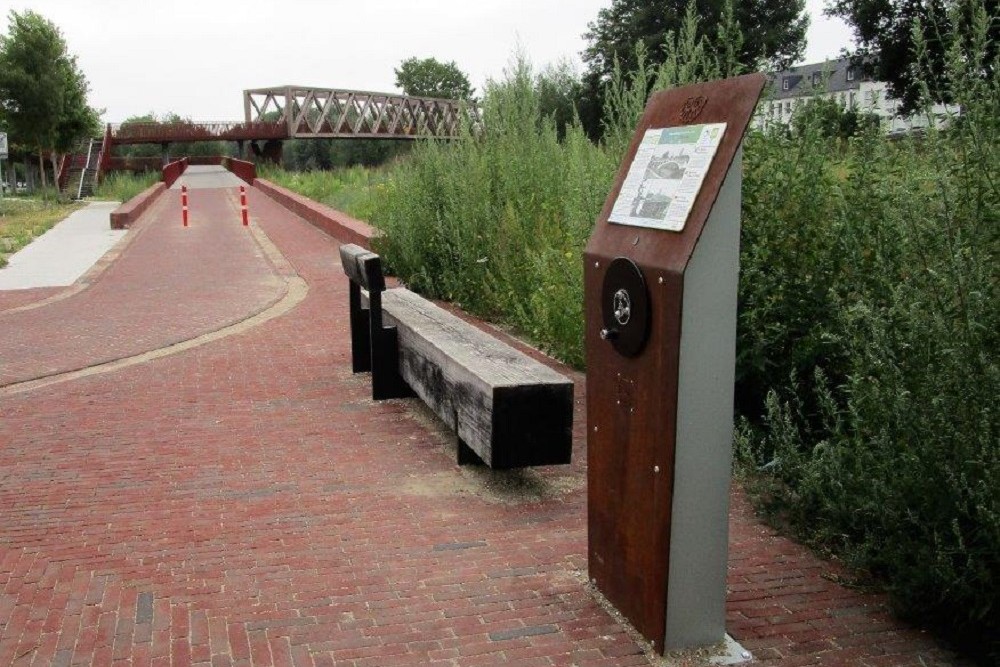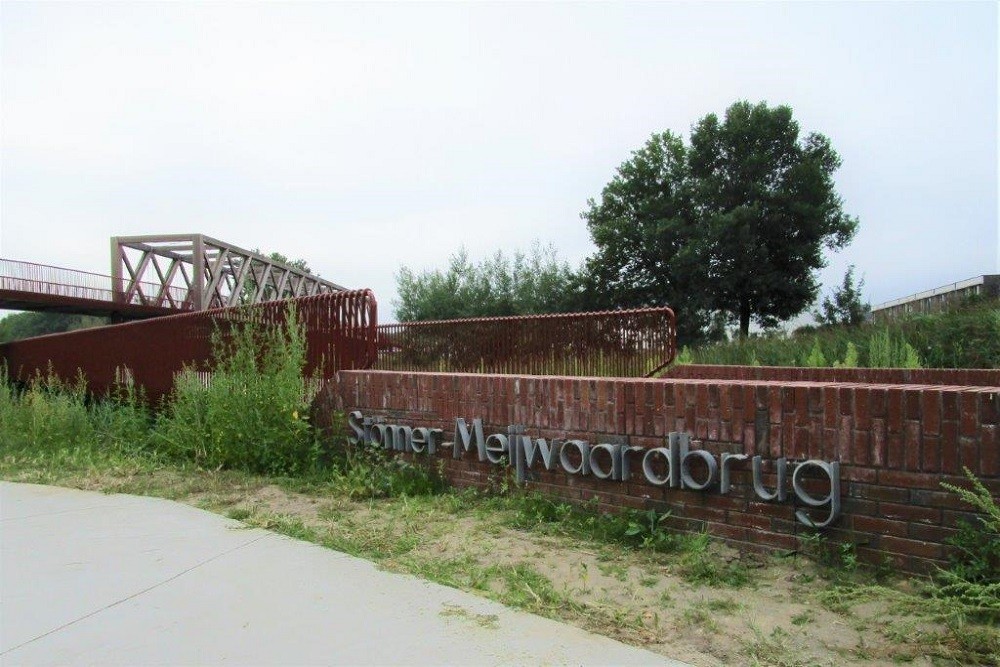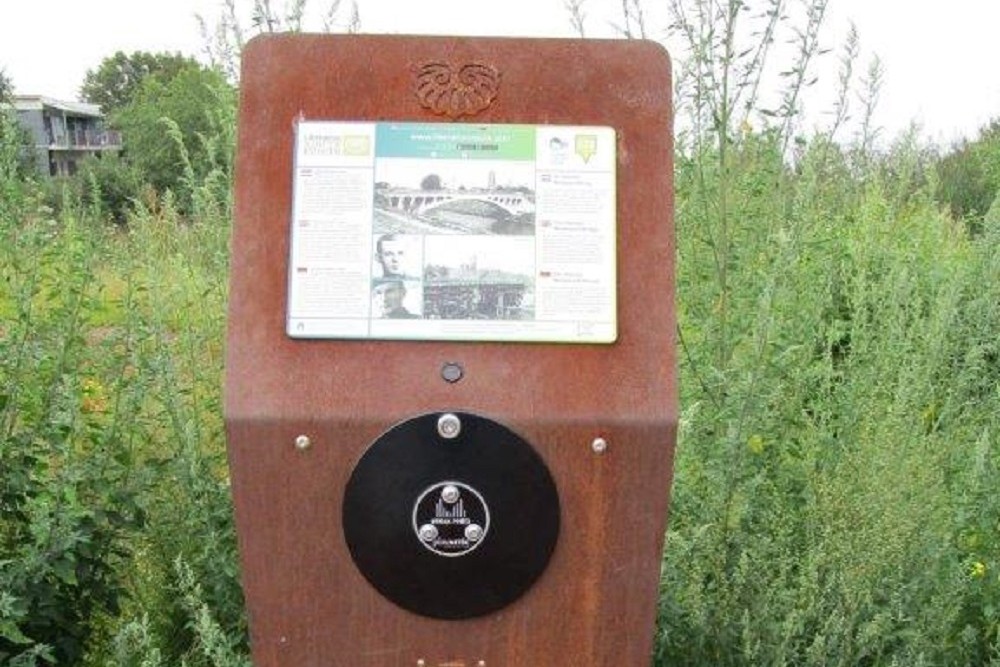Liberation Route Marker 172: The Stönner-Meijwaard Bridge
The Stönner-Meijwaard Bridge
By naming this bridge after them, Oirschot commemorates two young men who were fighting with the Princess Irene Brigade against the Germans in this area in 1944. Rinus Stönner and Willem Meijwaard lost their lives here at the front line. They were two of the many soldiers who gave up their lives for the liberation of the Netherlands.
Four days after the start of Operation Market Garden on 17 September 1944, Oirschot found itself in the front line. While the Anglo-American attack from Son was stuck at Best, the British units were able to advance in the Kempen towards Tilburg. This made the Wilhelmina Canal the front line between the Germans and the Allies.
A Dutch unit was also serving in the Second British Army: the Princess Irene Brigade. This unit was made up of conscripted Dutch citizens from overseas and volunteers. Rinus Stönner had lived in Canada since 1931 and had to sign up for military service in 1942, together with his brother. He was assigned to the first battle group of the Royal Dutch Princess Irene Brigade. Corporal Willem Meijwaard was a volunteer with the Marine Corps. A hundred marines joined the Princess Irene Brigade in April 1944.
They were both killed while fighting the German troops who were entrenched in Oirschot. This bridge across the Wilhelmina Canal, which was built in 2020, is named in honour of them. Oirschot was liberated on 24 October 1944.
Audiospot - The Stönner-Meijwaard Bridge
Liberation Route Europe is a certified Cultural Route of the Council of Europe. With hundreds of sites and stories in nine European countries, the route links the main regions along the advance of the Allied Forces in 1943-1945.
The entire route consists of themed routes that can be travelled by by hiking, walking, cycling and car. These routes pass numerous historical and interesting sites and tell stories from a multitude of perspectives that were important in the final phase of World War II.
Many routes feature listening spots, offering the opportunity to listen to a historical story at a location. In addition, many ‘Vectors of Memory’ have been placed, indicating that the passer-by is on one of the Liberation Routes.
The routes can be found on the Liberation Route Europe website or in the app through which many stories can also be listened to.
Do you have more information about this location? Inform us!
Source
- Text: TracesOfWar & Liberation Route Europe
- Photos: Arie van Wijngaarden
Nearby
Museum
Point of interest
- Chapel Our Lady Of The Oak Oirschot - Oirschot
- Lt. Col. Mackenzie Bridge - Spoordonk
- Anti-Tank Gun 47 mm - Oirschot
Monument
- Liberation Memorial Oirschot - Oirschot
- Memorial Crashed French Plane Oirschot - Oirschot
- Memorial Lancaster MK I LL812 - Oost-, West- en Middelbeers
Cemetery
- Dutch War Graves Roman Catholic Cemetery Oirschot - Oirschot
- Commonwealth War Graves Roman Catholic Churchyard Oostelbeers - Oostelbeers
- Collective Grave Civilian Casualties Roman Catholic Cemetery Wintelre - Wintelre
Remembrance Stone
Fortification
- German Bunker Mock Airfield Oostelbeers - Oost-, West- en Middelbeers
- German Observation Bunker ‘Fake Ships' - Casteren
